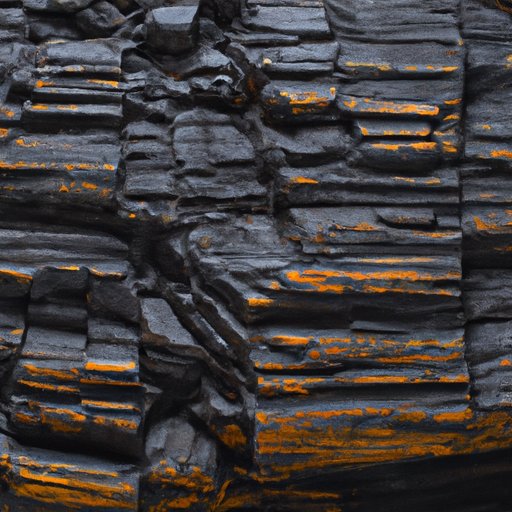Introduction
The Earth’s crust is the outermost layer of our planet, serving as a protective shell for the underlying mantle and core. Understanding the composition of the Earth’s crust is essential to gaining insight into our planet’s natural processes, including resource availability, geologic hazards, and climate change. This article explores the different elements and geological processes that contribute to the composition of the Earth’s crust.
The Surprising Ingredients That Make Up Earth’s Crust
The crust is primarily composed of eight key elements: oxygen, silicon, aluminum, iron, calcium, sodium, potassium, and magnesium. These elements are a product of the Earth’s formation and have been combined in different ways to form the crust. Oxygen is the most abundant element in the Earth’s crust, making up approximately 46 percent of its composition. Silicon, the second most abundant element, comprises around 28 percent of the crust’s makeup. Other elements, such as iron, aluminum, calcium, sodium, potassium, and magnesium, make up smaller percentages but still play significant roles in the formation and stability of the Earth’s crust.
Going Beneath the Surface: A Comprehensive Look at Crust Formation
There are several theories about the formation of the Earth’s crust. The most widely accepted theory is plate tectonics, which explains that the Earth’s crust is divided into large plates that move and interact with one another over time. Continental drift is another theory that explains the movement of the Earth’s crust over millions of years. Both of these theories contribute to our understanding of the formation of crustal features such as mountains and ocean basins.
Exploring the Geological Processes That Form the Crust
Geological processes such as erosion, weathering, and volcanic activity contribute to the formation and maintenance of the Earth’s crust. Erosion and weathering cause the breakdown of rocks and minerals, leading to the creation of sediment, while volcanic activity contributes to the formation of igneous rocks. These processes, along with others, work together to shape the Earth’s surface and create new mineral deposits important for human activities.
From Rocks to Minerals: Understanding the Building Blocks of Earth’s Crust
Rocks and minerals are the building blocks of the Earth’s crust. Rocks are comprised of two or more minerals, while minerals are naturally occurring inorganic compounds that have their own unique chemical and physical properties. There are three different types of rocks: igneous, sedimentary, and metamorphic. Igneous rocks form from volcanic activity, sedimentary rocks are created from the accumulation of sediment, and metamorphic rocks are created when existing rocks are subjected to high levels of heat and pressure. These different types of rocks contribute to the overall composition of the Earth’s crust.
The Chemical Make-up of the Crust: Why It Matters
The chemical make-up of the crust can impact various natural processes such as soil health, natural resource availability, geologic hazards, and climate change. For example, the type of minerals and rocks present in soil can directly impact plant growth and crop yields, which can ultimately affect the global food supply. Additionally, the chemical composition of the crust determines the availability of natural resources such as metals and minerals, which are used in everything from construction to technology. Understanding the chemical make-up of the Earth’s crust is crucial in mitigating geologic hazards such as earthquakes and volcanic eruptions and monitoring the impacts of climate change.
Digging Deeper: Unraveling the Mystery of the Earth’s Crust Composition
Understanding the composition of the Earth’s crust is a fascinating subject with significant implications for our planet’s natural processes. The geological history of the Earth is complex and continues to be an active topic of study for scientists. To learn more about the surface of our planet, there are plenty of resources available including geological textbooks, research papers, and documentaries.
Conclusion
The Earth’s crust is a complex and dynamic system that is constantly evolving through geological processes. By understanding the composition of the Earth’s crust, we can gain insight into our planet’s natural processes and the impact of human activity. The study of the Earth’s crust is an ever-evolving field, and continued research and understanding of its composition is crucial for the preservation and sustainability of our planet.
